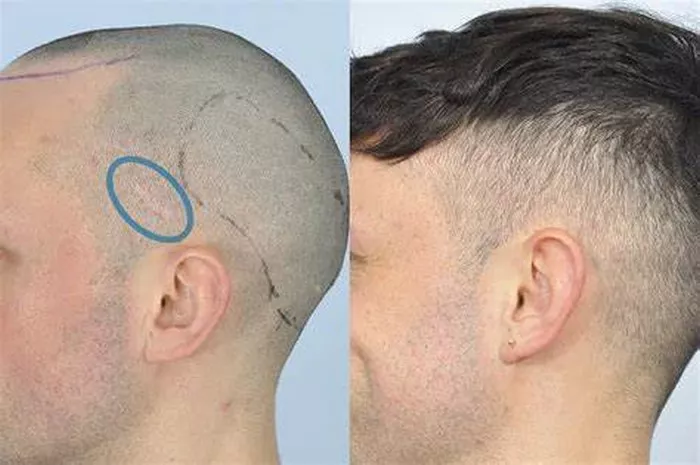Alopecia, a condition characterized by hair loss, affects millions of people worldwide and often leads to significant emotional distress. For those struggling with alopecia, finding an effective and lasting solution is a priority. Among the various treatments available, hair transplant surgery has gained considerable attention. But does hair transplant really work for alopecia? This article aims to provide a comprehensive understanding of how hair transplants interact with different types of alopecia, the benefits and limitations of the procedure, and what patients can expect throughout the process.
Understanding Alopecia: Types and Causes
Alopecia is not a single condition but rather a group of disorders that cause hair loss. The most common types include:
Androgenetic Alopecia (Male and Female Pattern Baldness)
This is the most prevalent form of hair loss, driven primarily by genetics and hormonal factors. It typically causes thinning at the crown and temples in men and diffuse thinning in women.
Alopecia Areata
An autoimmune disorder where the immune system attacks hair follicles, causing patchy hair loss. This form can sometimes resolve spontaneously but may also be chronic or recurrent.
Scarring Alopecia
Also known as cicatricial alopecia, this condition results in permanent destruction of hair follicles due to inflammation or injury, leading to irreversible hair loss.
Understanding the type of alopecia is crucial when considering hair transplant surgery as a treatment option.
How Does Hair Transplant Surgery Work?
Hair transplant surgery is a procedure where hair follicles are removed from a donor area—typically the back or sides of the scalp, where hair is genetically resistant to hair loss—and transplanted to the balding or thinning areas. Two main techniques dominate the field:
- Follicular Unit Transplantation (FUT): Involves removing a strip of scalp and dissecting it into individual follicular units.
- Follicular Unit Extraction (FUE): Involves extracting individual follicular units directly from the scalp.
After transplantation, the follicles establish blood supply and begin producing hair naturally. This makes hair transplant a semi-permanent solution for many patients.
For more detailed information on the procedure, you can explore hair transplant surgery.
Does Hair Transplant Work for Different Types of Alopecia?
Hair Transplant for Androgenetic Alopecia
Androgenetic alopecia is the most common indication for hair transplant surgery. Because the donor area hair is resistant to the hormones causing hair loss, transplanted hair generally continues to grow in the new location. Many patients experience significant and natural-looking results, making this procedure one of the most effective options for androgenetic alopecia.
Hair Transplant for Alopecia Areata
Alopecia areata poses a more complicated challenge. Since the condition is autoimmune and can cause unpredictable patchy hair loss, transplanted hair may also be targeted by the immune system. Consequently, hair transplant results can be inconsistent and often unsatisfactory unless the disease is stable and inactive for a prolonged period.
Hair Transplant for Scarring Alopecia
In scarring alopecia, the affected scalp loses hair follicles permanently due to inflammation and fibrosis. Hair transplant surgery can be attempted, but it requires careful patient selection and management. The success depends on the activity level of the disease and the quality of the scalp tissue. In some cases, surgery can help restore hair, but there is a higher risk of transplant failure.
Factors Influencing the Success of Hair Transplant for Alopecia
Several factors determine whether a hair transplant will be successful in treating alopecia:
- Type and stability of alopecia: As noted, androgenetic alopecia responds best, while active autoimmune or scarring conditions pose challenges.
- Donor hair availability: Sufficient healthy donor hair is essential for a good transplant outcome.
- Surgeon’s expertise: Skill and experience impact graft survival, aesthetic results, and complication rates.
- Patient’s overall health: General health affects healing and hair growth after transplant.
What to Expect After a Hair Transplant
Understanding the recovery process is important for anyone considering hair transplantation for alopecia. After the procedure, the scalp may experience redness, swelling, and mild discomfort. Tiny scabs form around transplanted follicles, which usually shed within 1-3 weeks. This shedding is a normal phase before new hair growth begins.
New hair typically starts to grow around 3 to 4 months post-surgery, with visible improvements between 6 and 12 months. Full results can take up to 18 months. Proper post-operative care is essential to optimize outcomes and minimize complications.
Learn more about managing this phase by reviewing information about hair transplant recovery.
Cost Considerations of Hair Transplant for Alopecia
The cost of hair transplant surgery varies widely depending on factors such as the extent of hair loss, number of grafts required, surgical technique, and geographic location. Patients should be cautious about extremely low-cost offers, as quality and safety may be compromised. Consulting with a reputable clinic and considering long-term benefits versus upfront costs is advisable.
Conclusion
Hair transplant surgery offers a powerful and proven solution for many individuals suffering from alopecia, particularly those with androgenetic alopecia. While results can be excellent for this group, success varies significantly with other forms such as alopecia areata and scarring alopecia, requiring careful evaluation and management.
Choosing hair transplantation should be based on a thorough diagnosis, realistic expectations, and guidance from experienced hair restoration specialists. With proper planning and care, hair transplant surgery can restore not just hair but also confidence and quality of life for many affected by alopecia.
Related Topics:
- The Treatment Rooms London Promotes Health for Better Hair Transplant Outcomes
- Recreating Women’s Crowning Glory with Advanced Hair Extensions
- Estherian Launches Dedicated DHI Hair Transplant Clinic in Istanbul


